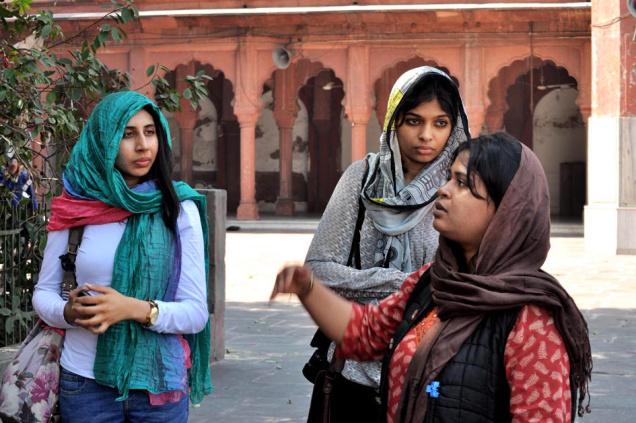
On International Women’s Day, a group of 23 heritage enthusiasts participated in a storytelling walk in the Walled City of Delhi. The walk created awareness about women who stood up for their rights and honour but have long been forgotten.
Barring two men, the rest of the participants were women who satiated their hunger for knowledge by frequently interrupting the host, an excellent raconteur.
Yuveka Singh, who conducted the walk and has experts on archaeology and history in her team, said the walk was conducted after methodical research work and interviewing women living in Old Delhi.
At 10 a.m., the group congregated at the Red Fort main gate. “The two-hour walk was an attempt to know a little more about some fascinating women who are more well known to some of the older residents of the Walled City. We spoke about Razia Sultana because she was far ahead of her times and involved in active politics even before she became the ruler. We wanted the participants, particularly women, to feel that they need to derive inspiration from women of the medieval period and speak up for their rights,” said Ms. Singh, a storytelling expert.
The first visit was to a dilapidated palace of an 18th Century nautch girl, who through her charisma and wit became the ruler of Sardhana.
The group had to pass through labyrinthine streets in the Bhagirath Palace area in Chandni Chowk but a look at the yellowish white edifice, which has nomenclature of erstwhile Lloyd’s Bank Ltd inscribed on it, made them scream with joy. The heritage building is one of the earliest colonial buildings with Greek pillars, which grace its front porch.
Begum Samru’s haveli was the first destination because she played a significant role in saving Delhiites from getting slaughtered by an invading force. “Our visit to Begum Samru’s haveli was a fruitful one as I was able to tell how this courtesan became a ruler of a principality near Meerut. And we also entered the haveli and saw the condition it is in,” said Ms. Singh.
The next destination was the famous Jain temple of Chandni Chowk. This was done to show the syncretic traditions of the Walled City, where Hindus and Muslims have lived peacefully for generations.
The walk concluded with a visit to the Fatehpuri Masjid.
During the walk, participants also learnt about the women in Shah Jahan’s life.
For history enthusiast Jahanara Rabia Raza, the walk gave her an insight into the lives of women who were brave, assertive and not willing to get subjugated by men. “Though I studied History at Delhi University and gave my papers on Razia Sultan, I did not know that the empress used to roam around after covering her countenance with a purdah and smoked hookah with men. She must have had guts to do all that during that period,” she said.
source: http://www.thehindu.com / The Hindu / Home> News> Cities> Delhi / by Madhur Tankha / New Delhi – March 09th, 2014








